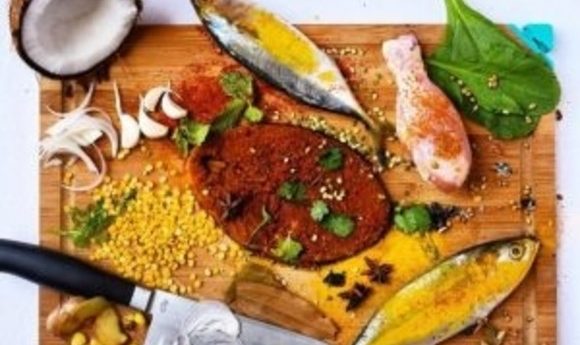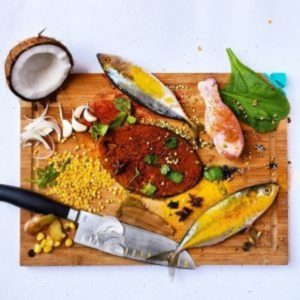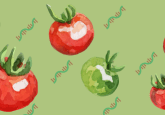Biotech recipes for sustainable food

As the world population increases, will genetic engineering provide sustainable food solutions in the face of impending food crisis?

Image courtesy of Viraj Borkar, Culinary Directory at restaurant INDAY in New York City.
The line grew increasingly long. “Sorry, we are out of food,” shouted the doorman repeatedly as hungry guests crowded around the door. This was not a novel sight; every New Year’s Eve drew throngs of food enthusiasts to the restaurant. But what if this was to be a regular scenario? Viraj Borkar, Culinary director at restaurant INDAY in New York City, shuddered at the eventuality of the thought.
As the world’s population is estimated to hit 10 billion by the year 2050, feeding such an overwhelming number of people is a growing concern in the food industry. Sustainable food options that address environmental issues and animal welfare concerns without compromising nutrition are the need of the hour. Owing to the recent boom in genome engineering, several biotech industries have joined forces with culinary innovators to develop sustainable food solutions.
Innovating Alternative Food Options
“The Food and Agriculture Organization of the United Nations (FAO) estimates that we will need to produce 70% more food than we do now to feed the [future] population; we will have to use genetic engineering methods to address this food security challenge,” said Dave Conley, Director of Corporate Communications at Aquabounty Technologies, a company producing genetically modified (GM) salmon.
Aquabounty’s FDA-approved GM salmon, AquAdvantage, was developed by introducing a growth hormone gene from Chinook salmon into the genome of an Atlantic salmon. This reduced the time for generating a full-grown market-ready salmon from 3 years to 18 months, thus saving precious time and resources for the company.
Conventional breeding methods lack precision and are time consuming, as they take place over several generations. New genetic engineering methods that easily counter these issues are being used for other interesting developments, such as increasing the omega-3 content in salmon, creating disease resistant salmon, and using microalgae as fish vaccine carriers, said Conley.
However, food production is not the major factor necessitating sustainable food solutions, according to Borkar. “If food production continues being what it is today, but wastage is reduced to almost zero, then it will help resolve the hunger issue now, and with proper growth, in 2050. However, current food production also contributes to a larger than needed carbon footprint,” he opined.
In this regard, actions, such as the Food Labeling Date Act in Congress and the Rockefeller Foundation’s $130 million YieldWise initiative, are underway to minimize food waste. While the former will standardize expiration date labels like “use by,” “sell by,” and “best before,” to reduce consumers’ confusion about food safety, the latter will help improve storage and transportation technologies to reduce preventable food loss in agriculture, Borkar informed.
Meanwhile, companies are reducing their carbon food print via innovative technologies. Aquabounty, for instance, uses a re-circulating aquaculture system (RAS), which minimizes the transportation costs and recycles >99% of the used water, for the commercial production of AquAdvantage.
Finding alternatives to meat, especially beef, is crucial as meat production contributes heavily to the carbon footprint. Impossible Foods, a company striving in this direction, produces meatless plant-based burgers to provide a satisfying culinary experience using minimum resources. According to their website, “Compared to a burger made from cows, making an Impossible Burger uses about 1/20th the land, 1/4th the water, and produces 1/8th the greenhouse gas emissions.”
While Impossible Foods’ novel plant-based burgers spiked the curiosity of consumers, something was amiss, and sales dropped. Recently, the company further refined their product to rope in meat lovers by introducing a patty that “bleeds,” similar to an animal-derived patty, achieved by adding a key ingredient, leghemoglobin. This protein, genetically engineered in yeast, carries plant heme, which structurally resembles the heme found in meat, thus imparting authentic texture and flavor to the burger.
Borkar agrees that the biotech sector is revolutionizing the food industry, but suspects that some of these efforts feed into trends, rather than truly supporting sustainability. For instance, he finds the vegan lifestyle that Impossible Foods promotes impractical on a global level. “Instead of dissolving the meat component, if concepts like cultured meat (lab meats) join hands with the sustainability movement, the conjoined effort will be a catalyst in solving the hunger crisis faced with a growing population,” said Borkar.
Optimizing Existing Resources
Innovating new food options is one way of driving culinary sustainability, whereas creating awareness to optimize utilization of existing food resources is another complementary approach. Notable in this regard is the Monterey Bay Aquarium’s Seafood Watch program, which Borkar deemed to be “one of the smartest educative programs out there.”
Fishing without proper guidelines adversely impacts the ocean. In 1999, the Monterey Bay Aquarium, in a bid to fulfill their mission of ocean conservation, partnered with researchers and non-governmental organizations (NGOs) to inform the public regarding the sustainability of fish available in the US market by analyzing the fish species, fishing location, and method of fishing. In case of farmed fish, their report detailed the feed type, culturing system, and effluent-based water pollution levels of the fish farms to determine their sustainability.
“We do a pretty simple traffic light system at the consumer level, backed up by peer- reviewed science: green, best choice; yellow, good alternative; and red, avoid,” explained Ryan Bigelow, program engagement manager for the Monterey Bay Aquarium Seafood Watch program.
Their consistent efforts have had a notable impact on several fisheries within and outside the US. “We have states within the US who have changed their policies about certain fisheries because of pressure from us,” informed Bigelow, citing the striking example of Louisiana. Previously, the Louisiana state fishery did not follow national guidelines on turtle excluder devices (a trapdoor for turtles to escape from shrimp cages); thus, the fishery ended up in the red zone of the Monterey Bay Aquarium Seafood Watch list. Eventually, the state allowed the use of this device, specifically citing that their decision was based on pressure from environmental NGOs, said Bigelow.
In general, the food industry is awakening to the call for education regarding sustainable food solutions. Prominent examples include the educational program hosted by the Center for Urban Education and Sustainable Agriculture, which connects urban eaters to local farmers, and the holistic academic experience offered by EARTH University in Mercedes, Costa Rica, to help understand agricultural production processes and their socio-environmental impacts.
“Education of the masses is one of the most important factors that will determine the success of good genetic engineering and sustainability programs,” Borkar concluded.





